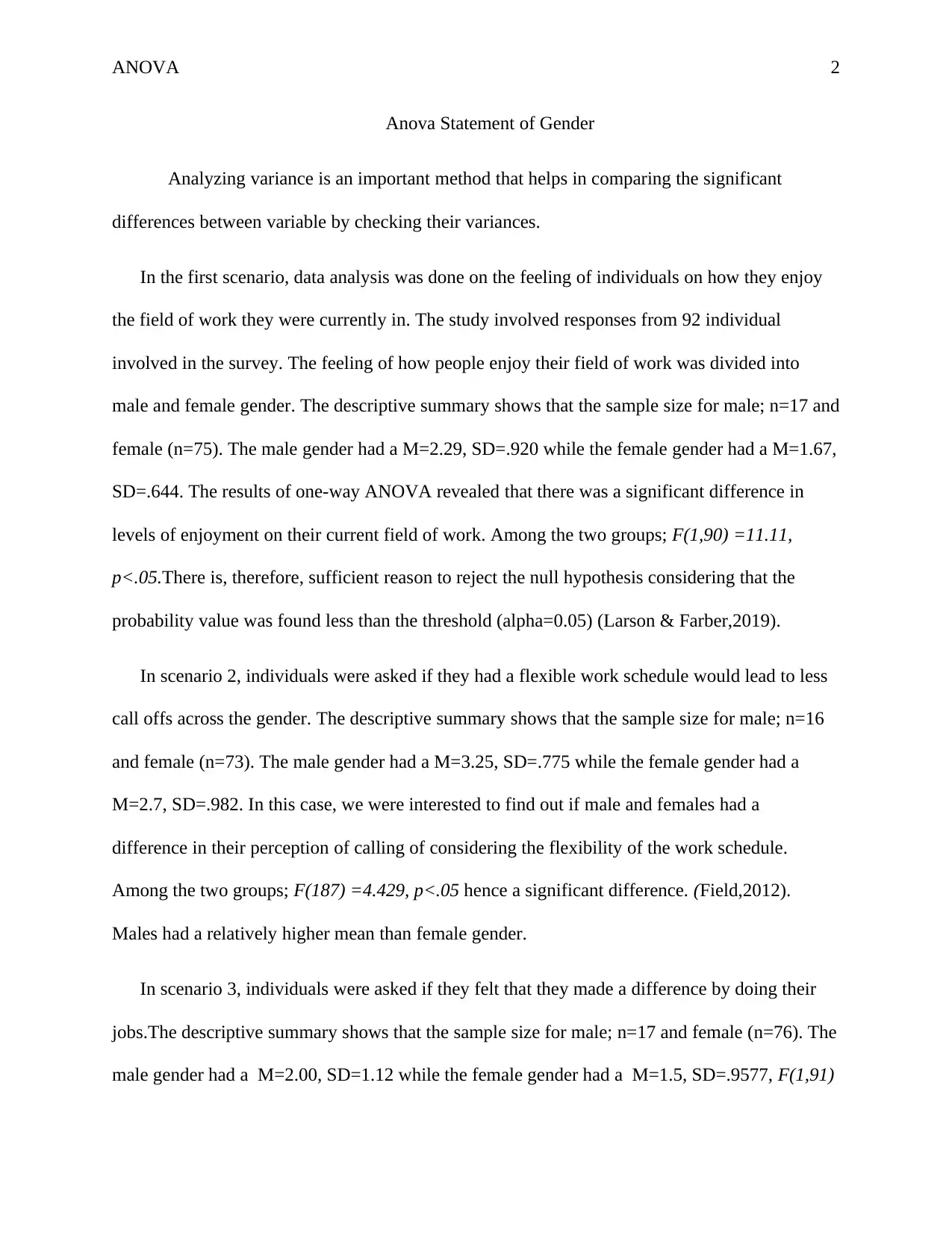Statistical Analysis Report: ANOVA Analysis on Gender and Work
VerifiedAdded on 2022/12/19
|4
|447
|52
Report
AI Summary
This report presents an analysis of variance (ANOVA) to examine the differences in work-related perceptions between genders. The study investigates three scenarios: the enjoyment of work, the impact of flexible work schedules on call-offs, and the feeling of making a difference through work. The analysis includes descriptive statistics, such as means and standard deviations for male and female groups, and the results of the one-way ANOVA tests. The findings reveal significant differences between genders in all three scenarios. The report highlights the statistical significance of the results, indicating that gender plays a role in how individuals perceive their work experiences. The report also references the sources used for the analysis, including Field (2012) and Larson & Farber (2019).
1 out of 4











![[object Object]](/_next/static/media/star-bottom.7253800d.svg)